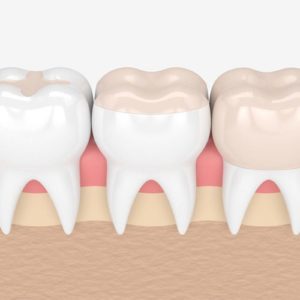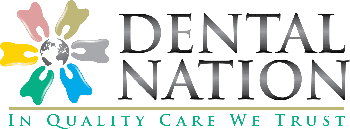Reliable Emergency Dental Care in Las Vegas, NV

If you experience a dental emergency, be sure to call our practice as soon as possible. If you need immediate attention after hours, call our emergency phone number and our on-call staff member will help you. If you are unable to reach our office during an emergency, dial 911.
We are here to help you, any time, any day. When your dental health is at risk, we will do everything we can to make sure that you’re treated as soon as possible. While dental emergencies are rare, they can happen, and it’s important to know how to take care of your teeth no matter what. Common dental emergencies include:
- Broken or cracked tooth/teeth
- Broken jaw
- Permanent tooth knocked out
- Object caught between teeth
- Severe toothache
There are times when it is necessary to remove a tooth. Sometimes a baby tooth has misshapen or long roots that prevent it from falling out as it should, and the tooth must be removed to make way for the permanent tooth to erupt. At other times, a tooth may have so much decay that it puts the surrounding teeth at risk of decay, so your doctor may recommend removal and replacement with a bridge or implant. Infection, orthodontic correction, or problems with a wisdom tooth can also require removal of a tooth.
When it is determined that a tooth needs to be removed, your dentist may extract the tooth during a regular checkup or may request another visit for this procedure. The root of each tooth is encased within your jawbone in a “tooth socket,” and your tooth is held in that socket by a ligament. In order to extract a tooth, your dentist must expand the socket and separate the tooth from the ligament holding it in place. While this procedure is typically very quick, it is important to share with your doctor any concerns or preferences for sedation.
Once a tooth has been removed, neighboring teeth may shift, causing problems with chewing or with your jaw joint function. To avoid these complications, your dentist may recommend that you replace the extracted tooth.

No one wants to lose their teeth, but sometimes it is necessary to undergo an extraction to restore and maintain the health of your smile. Extractions are never your dentist’s first choice, but in certain situations, the preservation of your oral health may be dependent on it.

Reasons Why Tooth Extractions Are Necessary
We always do everything we can to help patients keep their natural teeth, but sometimes it isn’t a viable option. Here are a few reasons why a tooth extraction may be necessary to restore your overall dental health and function:
- There is severe damage or decay to the tooth that is irreparable.
- To allow for a patient to undergo orthodontic treatment.
- For ensuring long-term success with a restoration, like a denture.
- When a primary tooth won’t fall out on its own.
- If a tooth is impacted and unable to erupt properly.
Ultimately, by extracting problematic teeth, future infections and other oral health issues are significantly less likely to occur.
The Process of Removing a Tooth
Teeth are generally removed by either pulling or surgical extraction. Teeth can only be “pulled” when they have fully emerged from the gumline. In this case, we will start by numbing the area around your tooth and use a clasping tool to shift the tooth around until it breaks away from the gumline. If pulling isn’t a possibility, the tooth will need to be surgically extracted. For this procedure, a small incision is made into your gum tissue to allow us the ability to reach enough of your tooth to fully remove it.
To determine which extraction method would be necessary for you, come see us for a consultation where we can evaluate your smile. In the process of discussing the extraction, we will also talk about necessary tooth replacement options to prevent future oral health issues as a result of tooth loss.
Tooth Extraction Aftercare
Before you leave the practice, we will provide you with a specific aftercare plan to help you stay comfortable and avoid complications. While every case is different, here are some steps that we will generally recommend for optimal recovery:
- Take recommended over-the-counter and prescribed medications as directed
- Rinse with saltwater 24 hours after your procedure
- Avoid using tobacco products until your mouth has healed
- Do not drink using a straw
- Elevate your head while sleeping
- Get plenty of rest
- Apply a cold compress to reduce swelling and discomfort
- Stay away from hard, crunchy, and sticky foods
Wisdom teeth are types of molars found in the very back of your mouth. They usually appear in the late teens or early twenties, but may become impacted (fail to erupt) due to lack of room in the jaw or angle of entry. When a wisdom tooth is impacted, it may need to be removed. If it is not removed, you may develop gum tenderness, swelling, or even severe pain. Impacted wisdom teeth that are partially or fully erupted tend to be quite difficult to clean and are susceptible to tooth decay, recurring infections, and even gum disease.
Wisdom teeth are typically removed in the late teens or early twenties because there is a greater chance that the teeth’s roots have not fully formed and the bone surrounding the teeth is less dense. These two factors can make extraction easier as well as shorten the recovery time.
In order to remove a wisdom tooth, your dentist first needs to numb the area around the tooth with a local anesthetic. Since the impacted tooth may still be under the gums and embedded in your jaw bone, your dentist will need to remove a portion of the covering bone to extract the tooth. In order to minimize the amount of bone that is removed with the tooth, your dentist will often “section” your wisdom tooth so that each piece can be removed through a small opening in the bone. Once your wisdom teeth have been extracted, the healing process begins. Depending on the degree of difficulty related to the extraction, healing time varies. Your dentist will share with you what to expect and provide instructions for a comfortable, efficient healing process.
